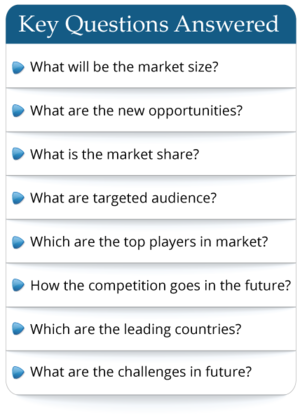Global Insulating Gloves Market Insights, Forecast to 2029
SKU ID : QYR-25741455 | Publishing Date : 17-Nov-2023 | No. of pages : 111
Employees who work in close proximity to live electrical current may require a variety of electrically insulating protective equipment. The Occupational Safety and Health Administration (OSHA) outlines this in its electrical protective equipment standard 29 Code of Federal Regulations (CFR) 1910.137, which provides the design requirements and in-service care and use requirements for electrical insulating gloves and sleeves as well as insulating blankets, matting, covers and line hoses.
Once the electrical safety gloves have been issued, OSHA requires that “protective equipment be maintained in a safe, reliable condition.” This requires that the gloves be inspected for any damage before each day’s use. Gloves must also be inspected immediately following any incident that may have caused damage. OSHA also requires that insulating gloves be given an air test along with the inspection.
The air testing method is described in ASTM F496-14a Standard Specification for in-Service Care of Insulating Gloves and Sleeves. The glove is filled with air, either manually or with a powered inflator, and then checked for leakage. The leakage is detected by listening for escaping air or by holding the glove against the tester’s cheek to feel air releasing. In accordance with ASTM F496-14a, gloves and sleeves should be expanded no more than 1.5 times their normal size for Type I, and 1.25 times normal for Type II during the air test. The procedure should then be repeated with the glove turned inside out.
Since sleeves cannot be inflated, they should be inspected along the edge as they are rolled. Rolling will stretch the sleeve along the edge, making cuts, tears and ozone cutting more visible. After the outside of the sleeve is inspected, the procedure should also be repeated with the sleeve turned inside out.
Before each use, gloves and sleeves should be inspected for holes; rips or tears; ozone, cutting or ultraviolet damage; and signs of chemical deterioration per ASTM F1236-14, Standard Guide for Visual Inspection of Electrical Protective Rubber Products. Gloves and sleeves should also be examined to determine if they show any damage as a result of chemical contamination, particularly from petroleum products. The first sign of chemical exposure is swelling in the area of contamination. Should any glove or sleeve be exposed to chemical contaminants or suspected of any other physical damage, they should be retested per ASTM D120-14a requirements.
The global Insulating Gloves market is projected to grow from US$ 289.8 million in 2023 to US$ 382 million by 2029, at a Compound Annual Growth Rate (CAGR) of 4.7% during the forecast period.
Global insulating gloves key players include Honeywell Safety, Ansell, YOTSUGI CO., LTD., Hubbell Power Systems, etc. Global top 5 manufacturers hold a share over 45%.
North America is the largest market, with a share over 30%, followed by Asia-Pacific and Europe, both have a share over 60%.
In terms of product, medium voltage is the largest segment, with a share about 55%. And in terms of application, the largest application is electrical and electronics, followed by automotive industry.
Report Includes:
This report presents an overview of global market for Insulating Gloves, sales, revenue and price. Analyses of the global market trends, with historic market revenue/sales data for 2018 - 2022, estimates for 2023, and projections of CAGR through 2029.
This report researches the key producers of Insulating Gloves, also provides the sales of main regions and countries. Highlights of the upcoming market potential for Insulating Gloves, and key regions/countries of focus to forecast this market into various segments and sub-segments. Country specific data and market value analysis for the U.S., Canada, Mexico, Brazil, China, Japan, South Korea, Southeast Asia, India, Germany, the U.K., Italy, Middle East, Africa, and Other Countries.
This report focuses on the Insulating Gloves sales, revenue, market share and industry ranking of main manufacturers, data from 2018 to 2023. Identification of the major stakeholders in the global Insulating Gloves market, and analysis of their competitive landscape and market positioning based on recent developments and segmental revenues. This report will help stakeholders to understand the competitive landscape and gain more insights and position their businesses and market strategies in a better way.
This report analyzes the segments data by type and by application, sales, revenue, and price, from 2018 to 2029. Evaluation and forecast the market size for Insulating Gloves sales, projected growth trends, production technology, application and end-user industry.
Descriptive company profiles of the major global players, including Honeywell Safety, Ansell, G.B. Industries, YOTSUGI CO., LTD., Hubbell Power Systems, CATU, Stanco Safety Products, SHUANGAN TECHNOLOGY and Dipped Products PLC (DPL), etc.
By Company
Honeywell Safety
Ansell
G.B. Industries
YOTSUGI CO., LTD.
Hubbell Power Systems
CATU
Stanco Safety Products
SHUANGAN TECHNOLOGY
Dipped Products PLC (DPL)
Cementex Products
Magid Glove & Safety
Raychem RPG
Boddingtons Electrical
Secura B.C.
Regeltex
Derancourt
Segment by Type
Medium Voltage
High Voltage
Low Voltage
Segment by Application
Electrical and Electronics
Automotive Industry
Public Utilities
Communication Industry
Others
Segment by Region
US & Canada
U.S.
Canada
China
Asia (excluding China)
Japan
South Korea
China Taiwan
Southeast Asia
India
Europe
Germany
France
U.K.
Italy
Russia
Middle East, Africa, Latin America
Brazil
Mexico
Turkey
Israel
GCC Countries
Chapter Outline
Chapter 1: Introduces the report scope of the report, executive summary of different market segments (by type and application, etc.), including the market size of each market segment, future development potential, and so on. It offers a high-level view of the current state of the market and its likely evolution in the short to mid-term, and long term.
Chapter 2: Sales (consumption), revenue of Insulating Gloves in global, regional level and country level. It provides a quantitative analysis of the market size and development potential of each region and its main countries and introduces the market development, future development prospects, market space, and capacity of each country in the world.
Chapter 3: Detailed analysis of Insulating Gloves manufacturers competitive landscape, price, sales, revenue, market share and industry ranking, latest development plan, merger, and acquisition information, etc.
Chapter 4: Provides the analysis of various market segments by type, covering the sales, revenue, average price, and development potential of each market segment, to help readers find the blue ocean market in different market segments.
Chapter 5: Provides the analysis of various market segments application, covering the sales, revenue, average price, and development potential of each market segment, to help readers find the blue ocean market in different downstream markets.
Chapter 6: US & Canada (US & Canada) by type, by application and by country, sales and revenue for each segment.
Chapter 7: Europe by type, by application and by country, sales and revenue for each segment.
Chapter 8: China by type, by application sales and revenue for each segment.
Chapter 9: Asia (excluding China) by type, by application and by region, sales and revenue for each segment.
Chapter 10: Middle East, Africa, and Latin America by type, by application and by country, sales and revenue for each segment.
Chapter 11: Provides profiles of key manufacturers, introducing the basic situation of the main companies in the market in detail, including product descriptions and specifications, Insulating Gloves sales, revenue, price, gross margin, and recent development, etc.
Chapter 12: Analysis of industrial chain, sales channel, key raw materials, distributors and customers.
Chapter 13: Introduces the market dynamics, latest developments of the market, the driving factors and restrictive factors of the market, the challenges and risks faced by manufacturers in the industry, and the analysis of relevant policies in the industry.
Chapter 14: The main points and conclusions of the report.
Frequently Asked Questions
- By product type
- By End User/Applications
- By Technology
- By Region

 Pre-order Enquiry
Pre-order Enquiry Request Free Sample
Request Free Sample


 Request Sample
Request Sample Request Discount
Request Discount










